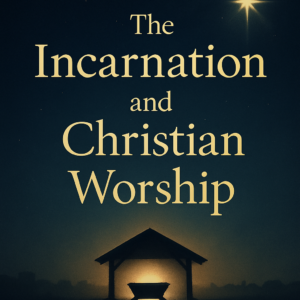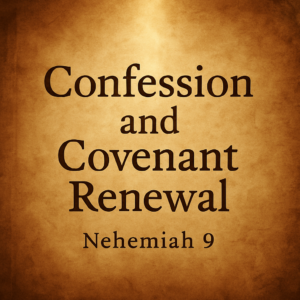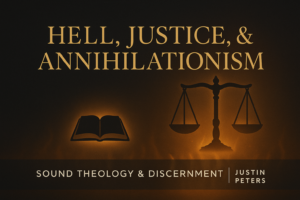⏱️ Estimated Reading Time: 5 min read
A couple of weeks ago, my son asked me a question that had been posed in his youth group:
“If you could spend 24 hours in any part of biblical times, what would you choose?”
Without hesitation, my answer was that I would want to be at the tomb of Jesus when the resurrection happened.
In this article, we’ll look at six facts that have been almost universally accepted by scholars—regardless of their belief or lack of belief in the gospel. These facts are drawn from a wide range of historical sources and provide a solid foundation for belief in the gospel of Jesus Christ.
Understanding Historical Evidence
Before diving into the list, it’s important to clarify the nature of the evidence we’re examining. We are seeking historical evidence—not scientific or philosophical proof. The resurrection of Jesus, along with his life and ministry, is presented as a historical event. It wasn’t just a vision, or a myth created by early Christians. Nor is it tested by lab experiments. Historical investigation looks at whether an event happened in the past using eyewitness accounts and other credible sources.
For example, my Eagles won the Super Bowl this year—but they also won Super Bowl 52, seven years ago. As a newly returned resident of the Philadelphia area, I can attest to that earlier win based on eyewitness testimony (my dad) and a whole bunch of memorabilia. It’s a simple example, but it reminds us that history is confirmed through evidence like testimony, documentation, and physical artifacts.
When historians study the resurrection, they uncover a set of widely accepted facts that strongly support the historicity of Jesus’ death and resurrection. For a deeper dive into this topic, I highly recommend The Case for the Resurrection of Jesus by Gary Habermas and Michael Licona.
The “Minimal Facts” Approach
From extensive scholarly analysis comes a core list of facts that are almost universally accepted as true. In On the Resurrection: Evidences, Gary Habermas outlines a method known as the “Minimal Facts” approach. He presents twelve facts, six of which are accepted by nearly all scholars, regardless of worldview, and six others that are supported by most scholars and are considered trustworthy.
We’ll look at the six that are almost universally accepted, along with one additional fact that has a high level of support.
Fact #1: Jesus died due to the effects of Roman crucifixion.
Some argue that Jesus didn’t actually die, but the evidence—biblical and historical—says otherwise. The crucifixion is the most widely attested event in Jesus’ life. Even atheist scholars, like Bart Ehrman, cite more than 15 independent sources supporting the crucifixion—many of them non-biblical.
Fact #2: The disciples believed they had experiences of the risen Jesus.
This is foundational to the gospel: Jesus rose from the dead and appeared to many. In 1 Corinthians 15:3–8, Paul records what most scholars believe is an early creed of the church that predates the New Testament. It shows that very early on, multiple eyewitnesses claimed to see the risen Christ.
Fact #3: The disciples’ lives were radically transformed.
After seeing the risen Jesus, the disciples were completely changed—even willing to die for their belief. Peter, Paul, and James (Jesus’ brother) are standout examples. Their transformation supports the truthfulness of the resurrection—they weren’t dying for a lie or a myth.
Fact #4: The proclamation of the resurrection began very early.
The early creed in 1 Corinthians 15 includes the statement that Jesus appeared to more than 500 people, “most of whom are still alive.” That kind of statement invites verification. The early proclamation—just weeks or months after Jesus’ death—shows that the resurrection message wasn’t a late invention.
Fact #5: James, the brother of Jesus, was converted after believing he saw the risen Christ.
James was skeptical during Jesus’ ministry. But 1 Corinthians 15:7 says Jesus appeared to him. After this experience, James became a leader in the Jerusalem church and eventually died as a martyr. His transformation is a key piece of the resurrection evidence.
Fact #6: Paul was also converted after claiming to see the risen Jesus.
Saul of Tarsus was a staunch opponent of the early church, but he became the Apostle Paul after a personal encounter with the risen Jesus (Acts 9). Paul’s testimony is considered one of the most reliable firsthand accounts as the author of thirteen epistles in the New Testament.
Bonus Fact: The tomb was found empty.
While not quite as universally accepted, the empty tomb is still strongly supported. No one ever produced Jesus’ body. Even Jesus’ opponents didn’t deny the tomb was empty—they simply tried to explain it away (Matthew 28). The tomb’s emptiness remains a compelling piece of the puzzle.
In Conclusion
As we approach Resurrection Sunday and reflect on the risen Christ, we can be confident that our faith is not in vain. It’s not blind or baseless, it’s grounded in real historical evidence. The facts support what the Scriptures teach: Jesus rose from the dead.
If you’re looking for a personal way to reflect, choose one of the Gospel accounts of the resurrection (like in Matthew 28; Mark 16, John 20, and Luke 24) and meditate on the hope we have in Jesus. Let these truths strengthen your faith and prepare your heart for the joy of Resurrection Sunday.




